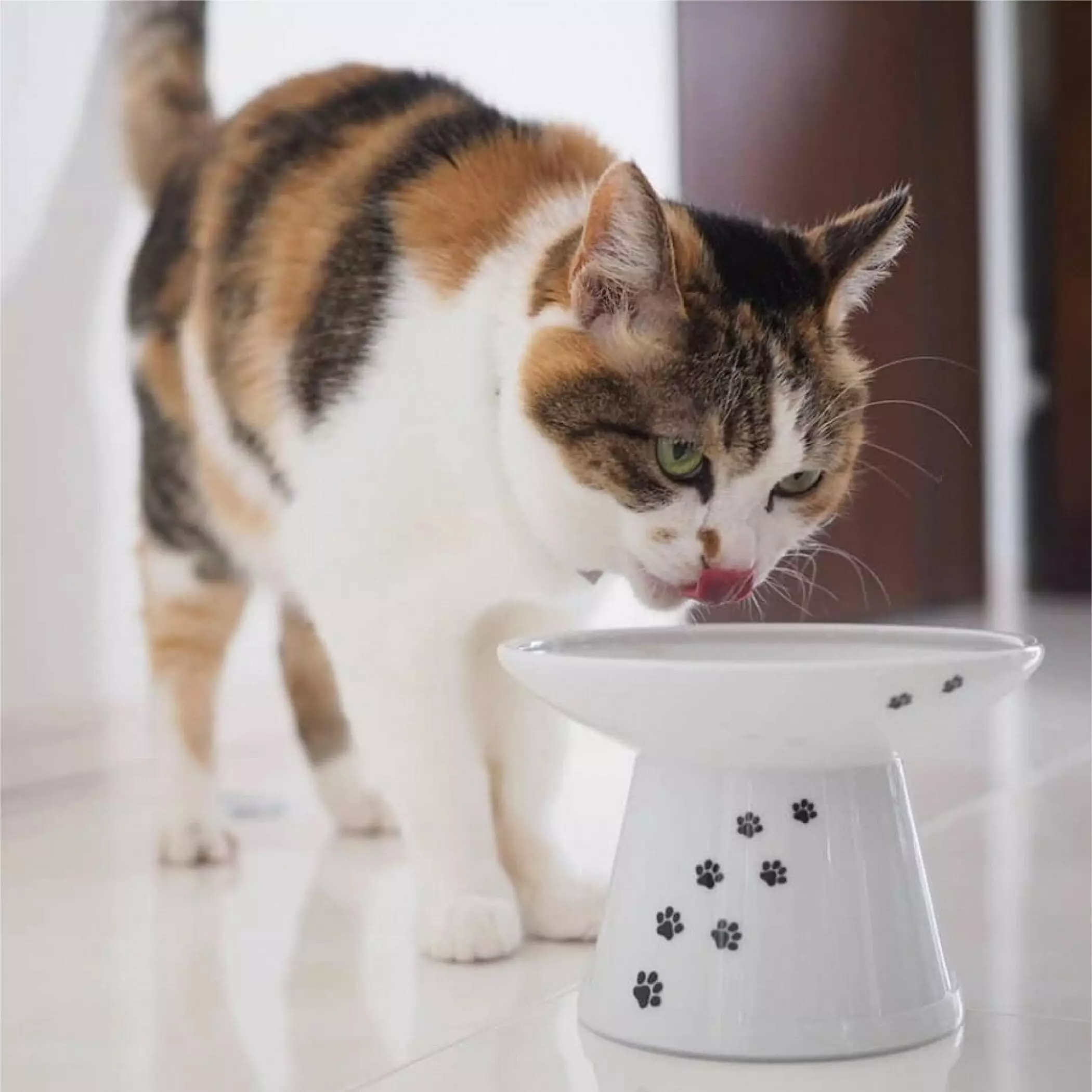Whisker fatigue, often termed whisker stress or exhaustion, is a condition that can significantly impact the comfort and well-being of cats, particularly those with sensitive whiskers. Though it may seem trivial, the discomfort caused by whisker fatigue can manifest in various behavioral issues, affecting your cat’s overall happiness. Whiskers are more than just fuzzy facial hair; they are highly sensitive tactile sensors that help cats navigate their environment. They provide important information about nearby objects, including their distance and size. When a cat’s whiskers experience overstimulation—such as repeated contact with the sides of narrow food bowls—it can lead to stress and discomfort for these beloved pets.
One of the main contributors to whisker fatigue is the design of the feeding bowls. Cats generally prefer deep or narrow bowls, which can force their sensitive whiskers into constant contact with the sides, leading to overstimulation. Additionally, in multi-cat households, overcrowded feeding areas can exacerbate the problem. Cats may inadvertently bump into each other during mealtime, leading to further whisker irritation.
Another significant factor involved in whisker fatigue is bowl hygiene. If food debris accumulates in the feeding bowls, it can irritate a cat’s whiskers and worsen the symptoms of whisker stress. Moreover, prolonged feeding sessions—whether due to slow-eating habits or others—can lead to excessive whisker stimulation, compounding the issue.
Identifying whisker fatigue can often be subtle, as the signs may not be immediately obvious. Cats suffering from this condition may display a range of behaviors that indicate discomfort. One of the primary symptoms is reluctance to eat; if your cat suddenly loses interest in their food, it may be due to whisker discomfort.
Additionally, you may observe your cat pawing around the bowl, a behavior that suggests they are trying to adjust their eating position to alleviate the irritation caused by their whiskers. It’s also common for cats experiencing whisker fatigue to knock food out of their bowls onto the floor, opting for a more comfortable eating position.
Other behavioral signs can include increased irritability, anxiety, or agitation. If your cat appears stressed around mealtime or shows signs of aggression, these can also be indicators that whisker fatigue is at play.
To help your cat overcome whisker fatigue, there are several actionable steps that you can implement. First and foremost, it is advisable to switch to feeding bowls that are wide and shallow. These types of bowls allow cats to eat comfortably without their whiskers making contact with the sides, thereby reducing overstimulation. Material also matters; ceramic or stainless steel bowls are ideal since they are easy to clean and less likely to harbor bacteria compared to plastic or bamboo composite alternatives, which can lead to other health issues.
If you have multiple cats, ensuring that each one has its own individual feeding station can help alleviate whisker contact during meal times. This can significantly reduce stress associated with overcrowding at the bowl.
Regular maintenance of your cat’s food and water bowls is also critical for comfort. By keeping bowls clean and free from leftover food or residue, you minimize the chances of irritating your cat’s delicate whiskers. Offering alternative feeding options—such as flat plates or shallow dishes—can also provide relief, as these surfaces further reduce whisker contact.
Consider investing in slow feeder bowls if your cat tends to eat quickly. These specially designed bowls regulate eating speed, which in turn helps minimize prolonged whisker stimulation.
Finally, it’s essential to observe your cat’s eating behavior and body language closely. If the symptoms of whisker fatigue persist despite implementing these changes, consulting a veterinarian may be beneficial for further evaluation and guidance.
Whisker fatigue is an often-overlooked condition that can lead to discomfort and anxiety in cats. By understanding its causes, recognizing the symptoms, and taking proactive steps to alleviate the issue, you can create a more enjoyable feeding experience for your feline friend. Remember, a content and comfortable cat is not only happier but also healthier. Taking the time to address whisker fatigue is a rewarding investment in your cat’s overall well-being.
